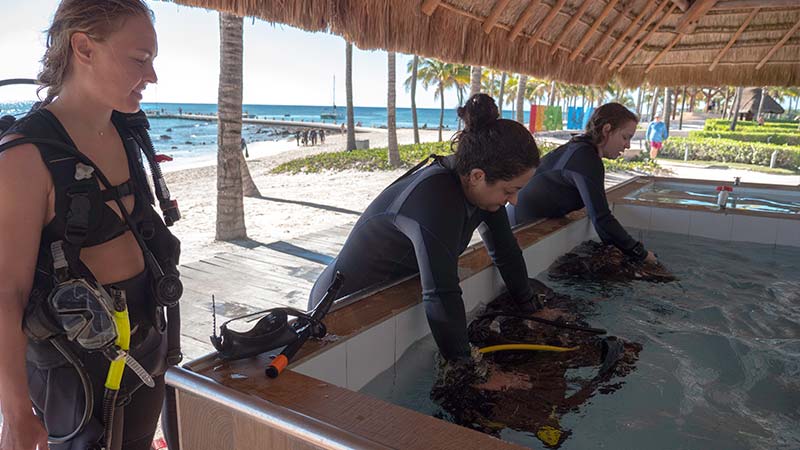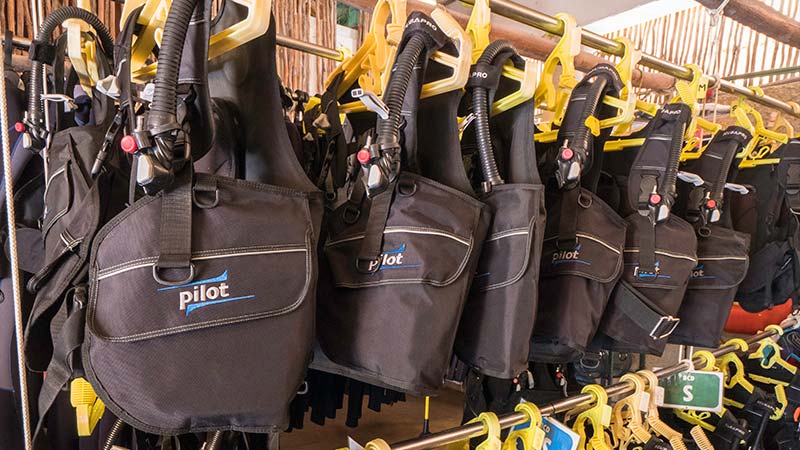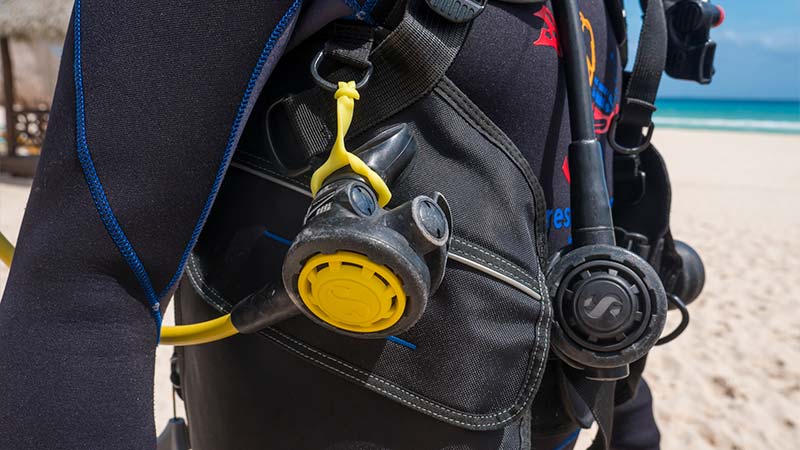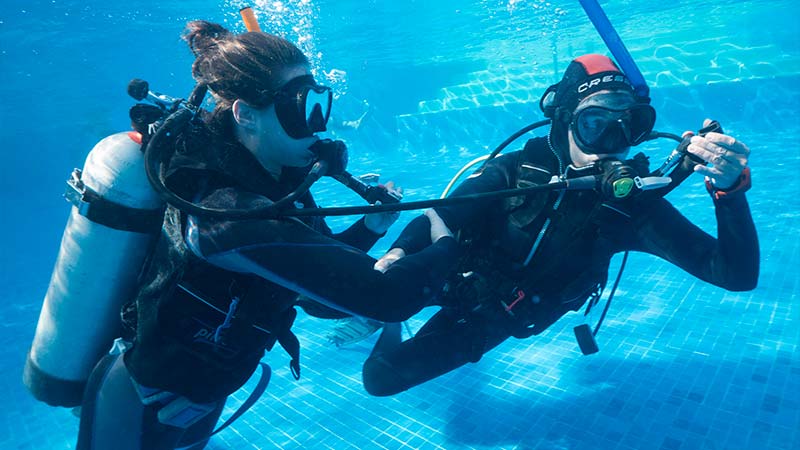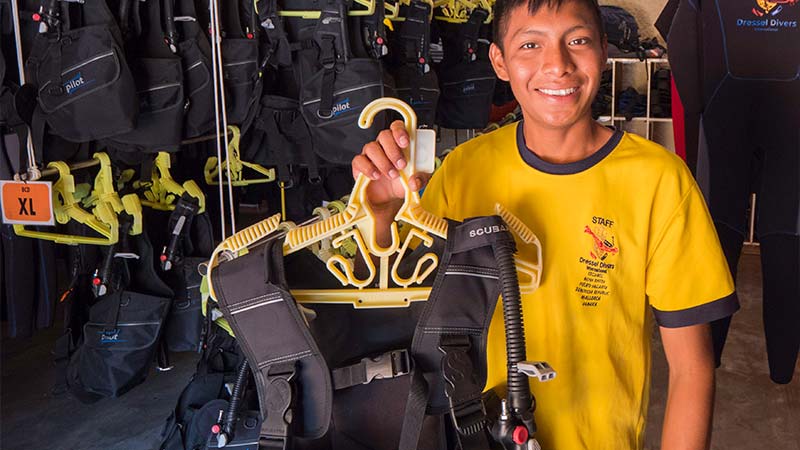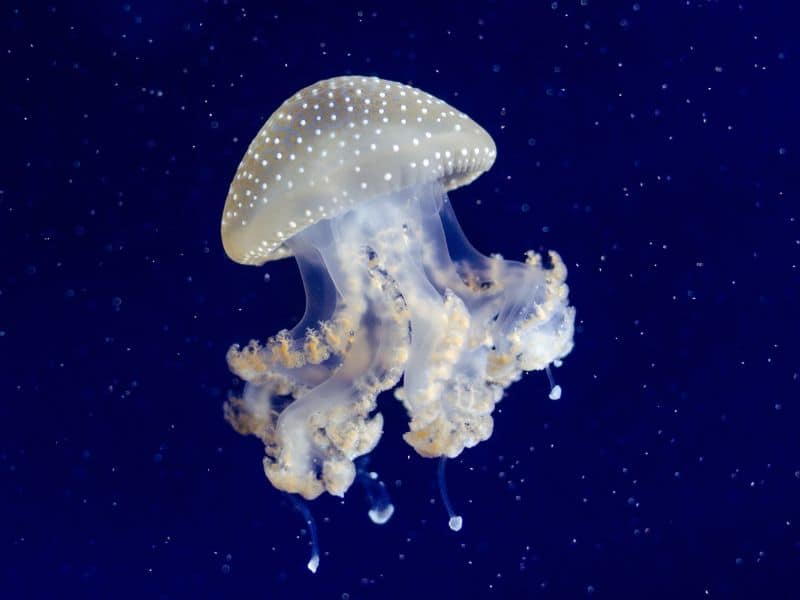4. What Should I Look For When Buying a Scuba Diving Vest That Meets My Needs?
4.1 Size and comfort: These are key factors when choosing your diving vest.
You don’t want one that is too big and prevents you from moving freely, or one that is too tight and uncomfortable.
The best thing is for the diving jacket to not be overtight and to not make it difficult for you to breathe when fully inflated.
Most of the vest models have adjustable straps on the chest, abdomen, and sides, so that you can adapt it to your body optimally. Make sure the abdominal strap closes securely and without difficulty.
The specific models for women have a special design to avoid discomfort, especially on the chest and lower back.
If you are undecided between two sizes of a vest model, you must also take into account the type of wetsuit you will be diving in.
If it is thick, it is better to choose the larger size. Remember that you will be spending a lot of time in your BC, both in and out of the water, so it is essential that you feel comfortable.
In addition to size and comfort, there are other features to consider when choosing your scuba diving vest.
4.2. Diving vest buoyancy capacity
When you’re looking for your perfect vest, it’s important to consider the ability to hold air.
Typically, vests for children and adolescents have a capacity of 12-14 liters – 3.17-3.70 gallons, while those of medium size (for women and men of average size) have a capacity of 14-18 liters – 3.70-4.75 gallons. The large and extra-large vests, meanwhile, have a capacity of 18-26 liters – 4.75-6.87 gallons.
Why is this important? Well, because the bigger your BCD vest is, the more resistance it will oppose to movement underwater, which will make it more difficult to control with precision and it will take more effort to move. In addition, it will cause you more instability when changing position.
But be careful, you also have to take into account the type of water in which you are going to dive. If it’s warm water, you can wear a thin wetsuit and you won’t need as much ballast to sink, so you won’t need as much air in your BC to come up and stay afloat on the surface.
However, if you are diving in cold water and you are wearing a thicker suit, especially a dry suit, you will need more weight and therefore a larger capacity BC.
Another thing to keep in mind is that the buoyancy capacity of the BC determines the maximum size of the bottle or bottles that you can use in a dive.
If you are a technical diver and plan to dive with more than one cylinder, carry heavy equipment, or wear a thick neoprene or dry suit, you will need a larger capacity scuba jacket.
However, for recreational single tank diving, any BCD model will give you enough flotation as long as it is your correct size.
4.3. Diving jacket manufacturing materials
Diving vests, are commonly made from two synthetic fabrics: nylon and Cordura. Nylon scuba vests are lighter and often cheaper, making them ideal for recreational diving. On the other hand, Cordura dive vests are more resistant and durable, although they are also usually more expensive and heavier. They are perfect for instructors or people who are dedicated to professional diving and use them daily or very frequently. There are also models that combine both materials, preserving the lightness of nylon and providing greater resistance to the diving vest.
Do you want to measure how much a dive vest resists abrasion? In that case, you can look at the “sanity rating,” which will indicate the degree of resistance. The higher the number, the stronger the scuba vest will be.
Additional features that your diving vest must have to make it the perfect one for you:
The integrated weight. If you prefer to have weights inside the jacket instead of using a weight belt, make sure your new scuba diving jacket has pockets for integrating the weight. Some classic models can carry up to 4.5 kg/ 9.92 pounds. in each pocket.
D-rings are also a very useful feature for attaching your accessories. If you typically carry a lot of connectors and want to keep everything within reach, look for a multi-ring scuba vest of this type. The best thing is that they are made of stainless steel, as they are more durable!
Finally, pockets for storing small diving accessories, such as flashlights, knives, or spare masks, can be a helpful feature. If you prefer to have the front of your scuba buoyancy vest free, it is best to avoid models with large pockets.




